According to The National Library, Garden and Home started life in 1946 as The South African Home Gardener and Poultry Keeper. It was printed in black and white with the only colour on the cover and was described as a monthly magazine devoted to gardening and food production
In those post-war years, when many ex-servicemen were moving out of the cities into homes in newly-established suburbs, this unassuming magazine provided the practical information that the public needed with features such as ‘Turning a piece of veld into a garden’ and ‘Gardening with a tractor’. The magazine cost a shilling and a reader wrote in to say: “In these days of dear books, you certainly give us a shilling’s worth of information.”
Charles W. Smith wrote in one of his early editor’s letters: “Now we have more time to devote to our new baby and we find, to our joy and surprise, that it is already on its feet and has attracted not only thousands of readers and hundreds of regular subscribers but a band of photographers and writers any magazine would be proud of.”
South African Garden and Home
In May 1950 the magazine dropped the poultry side and became known as South African Garden and Home. It concentrated on gardening, with Colonel Jeff’s monthly column ‘Over the Garden Gate’ so popular that when he retired in the mid-1960s, hundreds of reader tributes poured in. House features included useful housekeeping tips such as keeping moths away and organising the home.
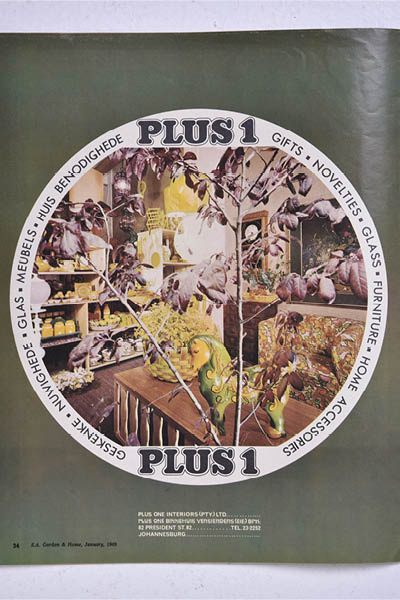
January 1969
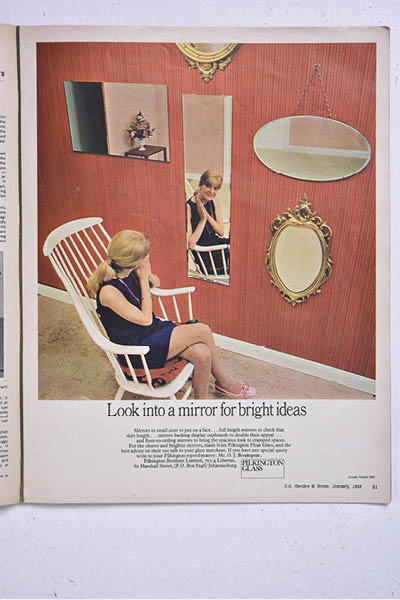
January 1969
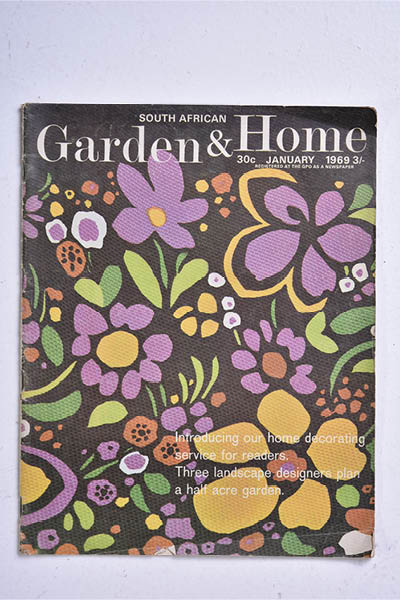
January 1969
In the ‘60s the price of the magazine, then owned by Combined Publishers, went up to two shillings or 20 cents as South Africa moved to the decimal currency system. It had a number of editors including well-known journalist Tanya Glavovic before she moved to the Financial Mail. Chloe Rolfes who succeeded her recalls: “It was a small format magazine then, printed on an apology for glossy paper with a 100 percent gardening content and a tiny budget. Writers were paid by the word, but weren’t paid for the words ‘and’, ‘but’ or ‘the’. A lot of the material was sourced using persuasive tactics.
Photographer Struan Robertson did cover pictures because we convinced him fame was better than money. Top architect Helmut Stauch gave us a free set of plans for a budget house. Cartoonist Dov Fedler did a wonderful double-page spread entitled ‘This month in the garden’ and introduced us to artist John Meyer who, hard to believe now, illustrated some of our articles.”
During this time the magazine took on a very ‘hip’ persona reflecting the modernism of the ‘60s and ‘70s. “As gardening attracted virtually no advertising, Combined Publishers decided to increase the size, splurge on a whole four pages of colour and introduce the ‘home’ side of the title in an attempt to make it turn a profit, or at least pay its way,” says Chloe. “When the first homemaking features appeared, the hard-core gardening readers went into riot mode. Subscribers (and there weren’t that many that we could afford to lose any of them) threatened to cancel. But the circulation doubled and the advertising grew.”
Introducing glamour
In 1971 the magazine was acquired by Durban-based Republican Press, founded by the legendary Hyman family. At the time there were thoughts of closing it but Tant Baby Hyman persuaded her husband to let her take it over. Realising, as a result of sanctions, South Africans were cut off in many ways from the rest of the world, she kept the tried and tested gardening features that were so popular and introduced glamour and excitement by featuring the homes and gardens of well-known South Africans such as Tretchikoff and the Oppenheimers, and highlighting the country’s many historic homes and gardens.
Long-time Garden and Home journalist Rosemary Barrett Seidner, who joined the magazine together with her photographer husband Trevor in 1972, remembers: “We pitched the idea of being a travelling photojournalist team. The publishers liked it so we bought a caravan and they bought us the V8 to tow it. In the beginning we travelled for nine months of the year! I worked on my typewriter in the caravan and we’d mail packages of features back to Tant Baby.
“We worked extremely hard; I remember doing around 14 features for a single issue and had to come up with noms de plume so it looked as though we had more staff. But, it worked and within three years the circulation grew from 16 000 to 100 000.”
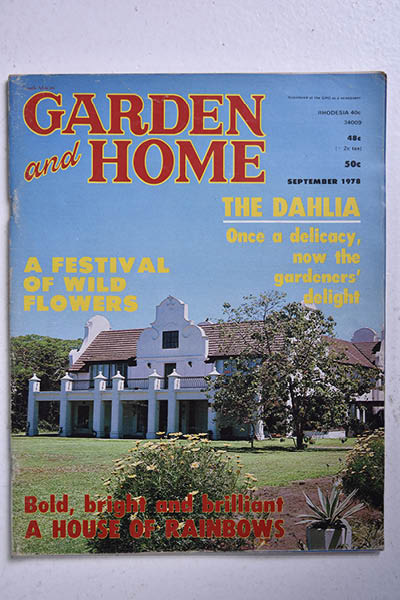
September 1978
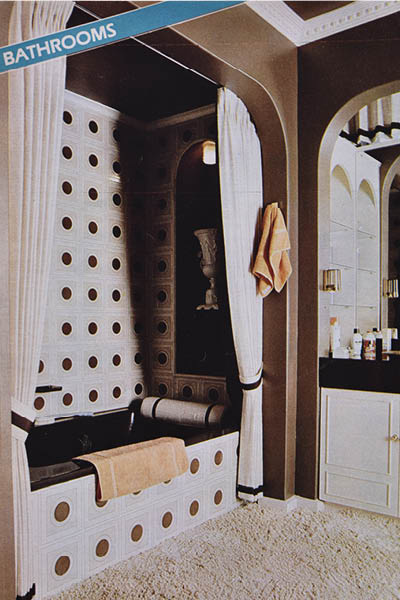
September 1978
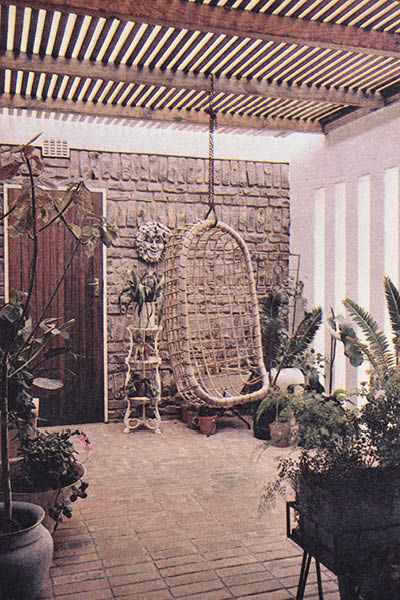
September 1978
There were many illustrious contributors to Garden and Home over the years including author Zoe Gilbert whom Chloe Rolfes describes as her mainstay “writing wonderful features and checking all the botanical names”, renowned plant pathologist Dr Vincent Wager, well-known writer Una van der Spuy and legendary gardening photojournalist Nancy Gardiner.
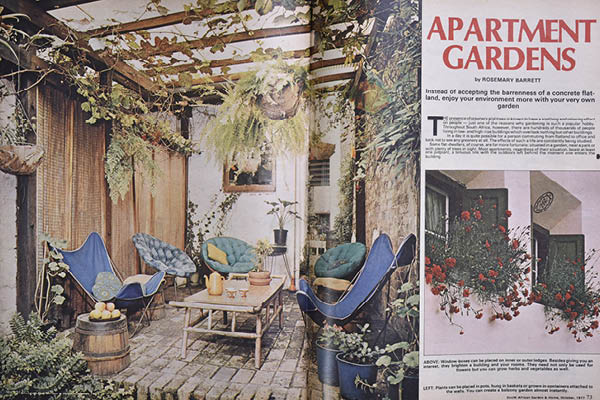
October 1977
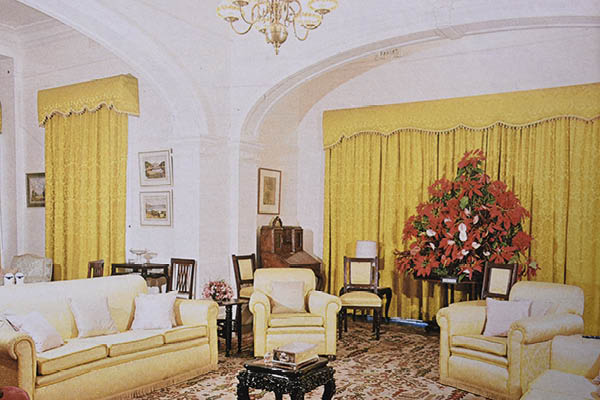
October 1977
When Margaret Wasserfall took over as editor from Tant Baby in 1983 Garden and Home was a household name. “By this time there was a younger generation of homeowners who wanted new ideas for the South African home,” recalls Margaret. “I had to move quickly to create editorial that was not only in step with the lifestyle of the ‘80s, but in tune with the decor and gardening fashions of the time. We introduced decor features designed to demystify decorating and provide ideas and information that would help our readers create their own beautiful homes. Meanwhile, the late Alex Cremer travelled the country in a converted truck stopping in caravan parks and private gardens to ensure that the homes we featured offered a broad view of South African decorating styles.”
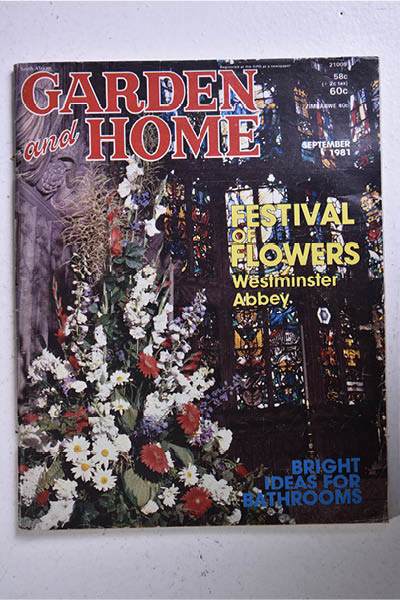
September 1981
Margaret badgered the publishers to do away with the black and white section of the magazine and allow full colour throughout. “I convinced them that by reducing the size to A4 we’d recover the cost in paper saved.”
A change in tone
The tone of the magazine moved from reporting to sharing information. “We assumed a friendlier, chatty tone, extending ourselves into our readers’ homes in a way that made them feel comfortable as though with a trusted friend,” recalls Margaret. “And then we reached out directly to our readers through the Garden and Home Academies with courses on gardening, landscaping, decor, curtain making and flower arranging.”

November 1984
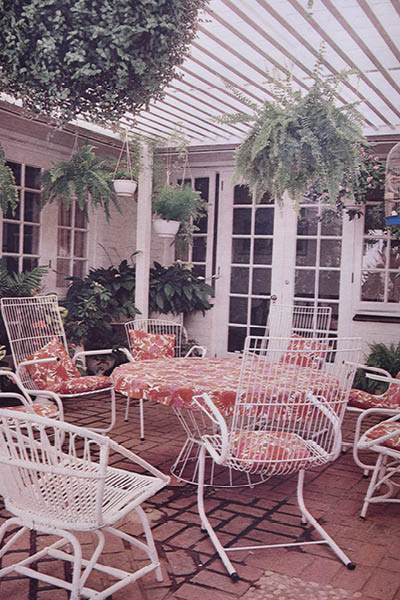
November 1984
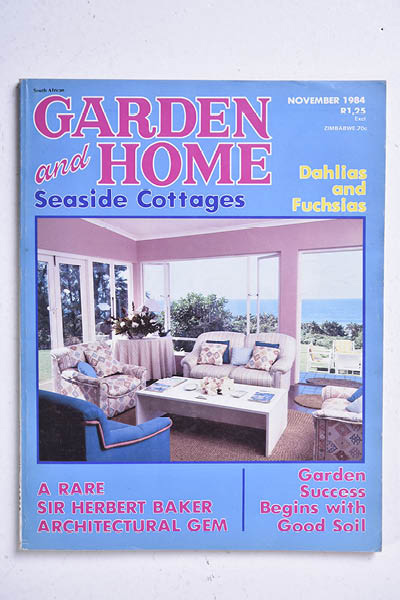
November 1984
Of course, the most radical change to magazines during this period came with the advent of the personal computer which revolutionised the way magazines were produced. Instead of long strips of typed copy being laboriously stuck down on templates, art directors could now organise pictures and copy on their screens and try out different layouts at the touch of a mouse before sending the completed work off to the printers. Copy and photographs could now be e-mailed to the magazine’s offices from all over the country (and in fact the world) in seconds – much faster than posting. Digital photography also sped up magazine shoots doing away with the need for film, Polaroids and processing. Photographers were now able to manipulate images on the computer and, in the case of house and garden shoots, ‘remove’ ugly fixtures like air conditioners, security cameras and irrigation systems.
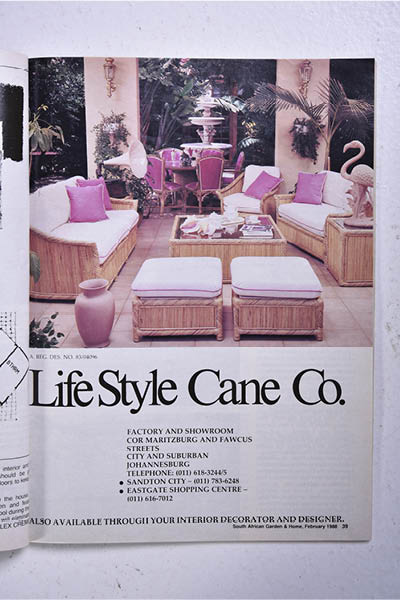
February 1988
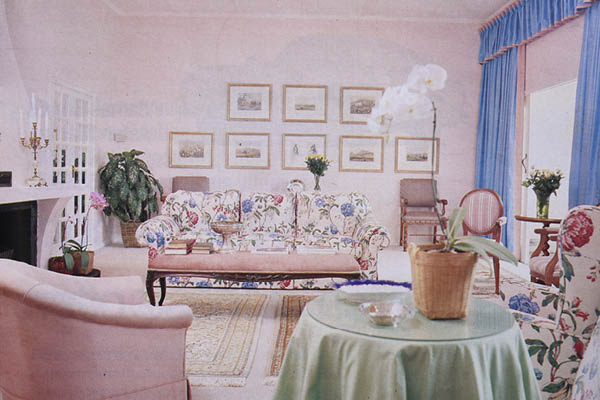
February 1988
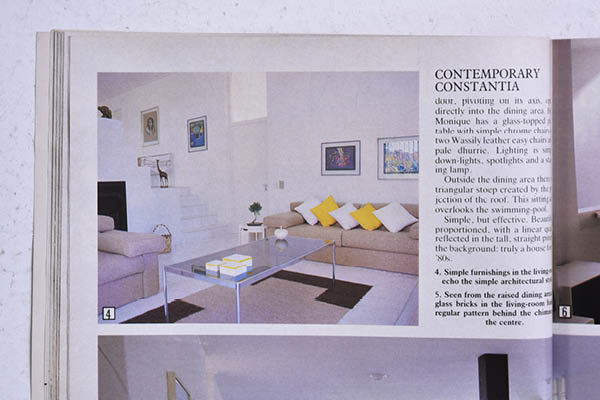
February 1988
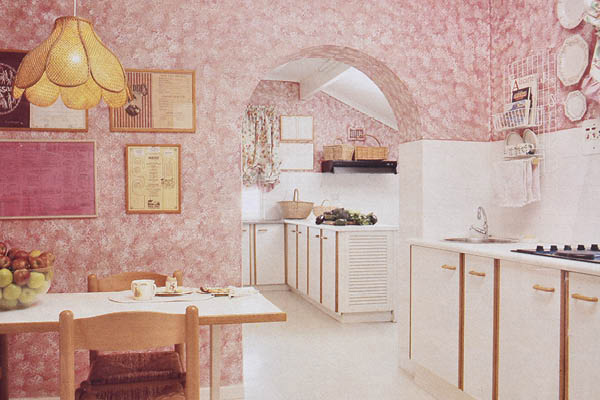
June 1988
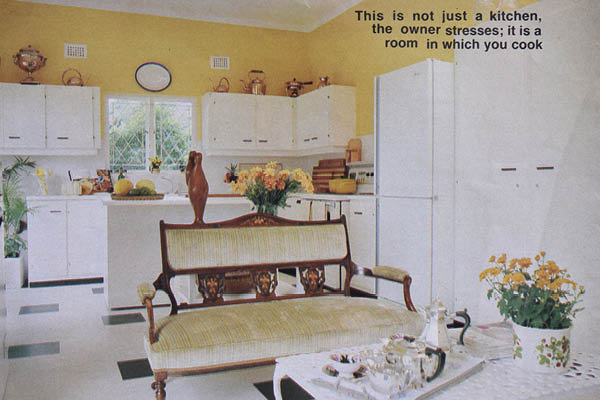
June 1988
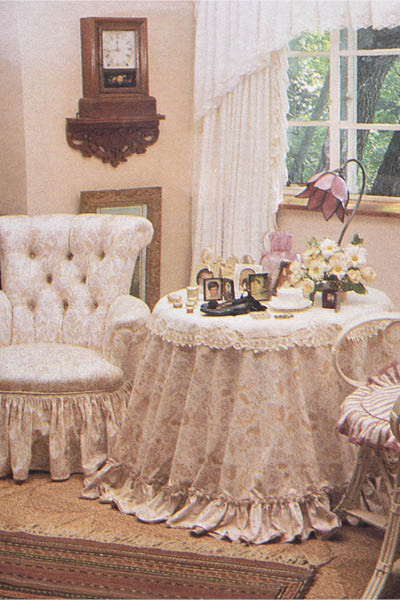
July 1988
The 21st century brought with it new opportunities and challenges. From being the only home and garden magazine, Garden and Home now had plenty of competition. ‘Cocooning’ – a term coined by Faith Popcorn in the 1990s – carried through to the new millennium, recalls Les Abercrombie who was editor from 2000 until 2008.
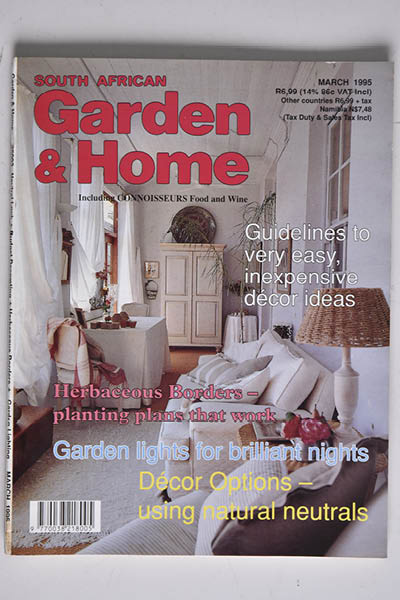
March 1995
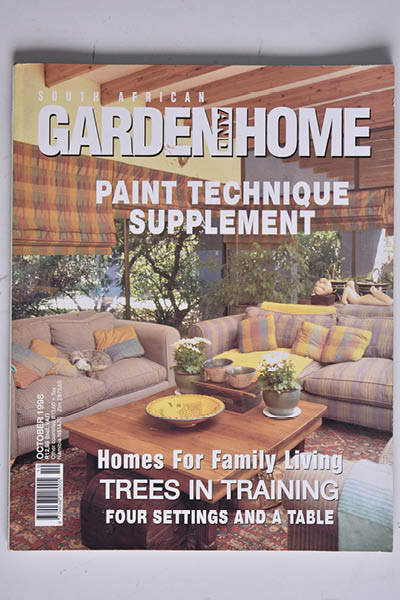
October 1998
“The majority of entertaining was done at home so the garden and home was still the lifestyle focus. Readers were keen on renovating and improving their homes with styles vacillating between clean industrial and French country. These were the ‘fat’ years before economies started toppling and, as their buying power was great, readers were able to go out and buy what they wanted for their homes.” As a result, decor shops, from small boutiques to large chain stores, began opening up around the country, as did garden centres which not only sold plants but became lifestyle destinations with restaurants and gift shops.
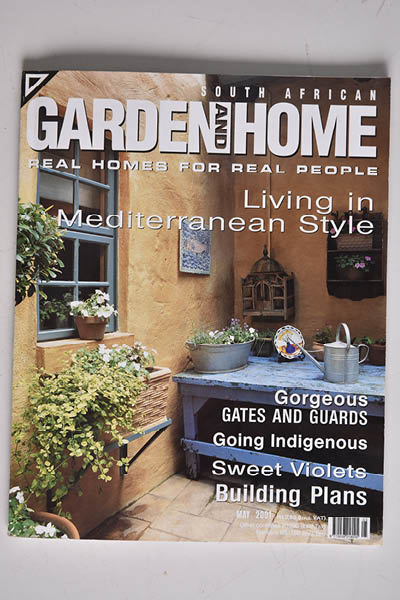
May 2001
In 2008 Garden and Home was moved up to Johannesburg by the present owners, Caxton Magazines, which had acquired the magazine from Perskor 12 years previously and current editor Mary Jane Harris was given the opportunity to edit the magazine she had worked for on and off for over 25 years.
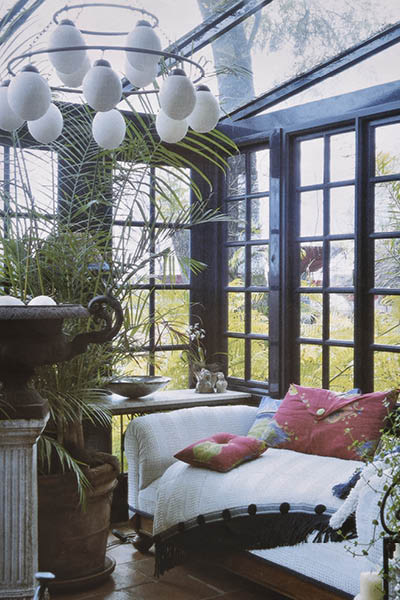
October 2002
“Trendswise we’ve found that, as a result of the recession, there’s a greater appreciation of what’s important – family, friends and home – and homes have become a sanctuary. There’s a strong leaning towards nostalgia and togetherness, and kitchens are often the main living area in a home,” says Mary Jane. “The popularity of features on upcycling furniture, makeovers and renovations reflects our readers’ desire to improve what they have and they’re also discovering the possibilities of online shopping and sourcing ideas from websites such as our own.
“There has also been a significant move to smaller homes and gardens and a much greater awareness of the need to protect the environment, grow our own food and bring back creatures like frogs and chameleons that have sadly disappeared from suburban gardens. Planting indigenous and establishing water-wise gardens are no longer seen as ‘radical’, but are normal practice in most gardens,” she says. “One of the reasons for the magazine’s longevity is its ability to adapt to the needs of the reader, providing them with the inspiration and the know how to help them create their own beautiful gardens and homes.”

